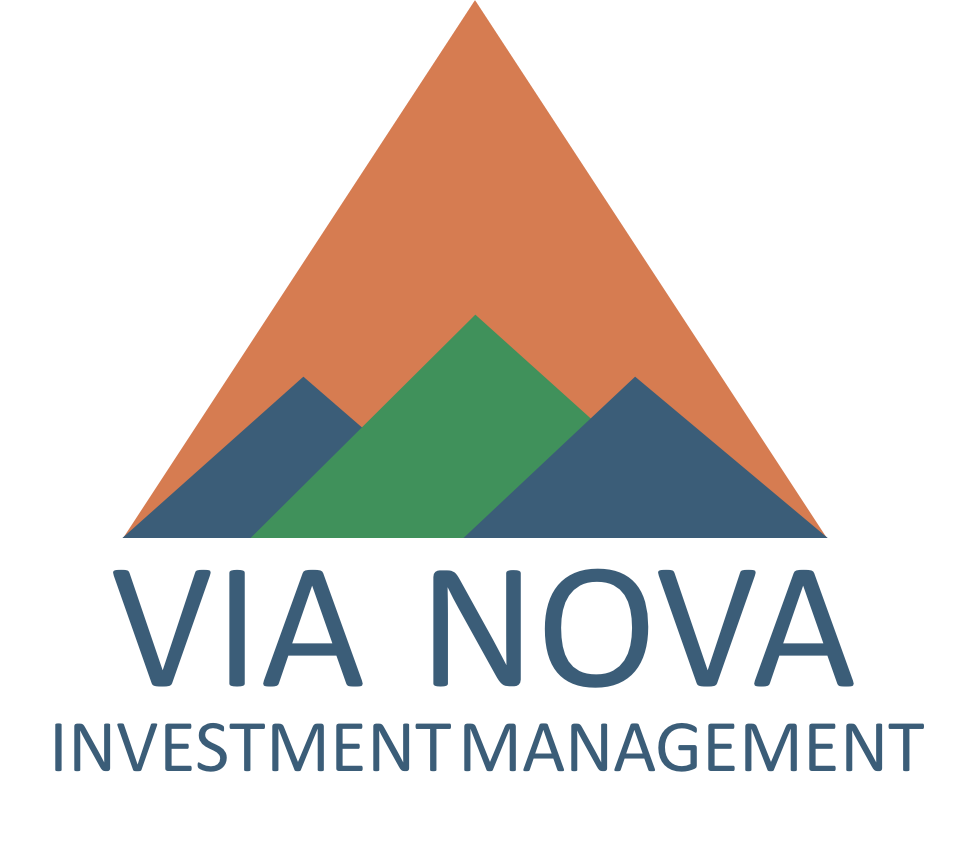HIGHLIGHTS:
- The facts helped the S&P 500 finish higher, and the fears helped bond returns.
- Via Nova’s outlook for the economy and stock market remains positive, but fears are likely to persist near term. Climbing the “wall of worry.”
The facts helped the S&P 500 finish higher, and the fears helped bond returns.
The S&P 500, supported by continued favorable economic and earnings reports, weathered a roller coaster ride of international trade and political instability announcements to finish May with a 2.41% gain. The pro-cyclical technology, energy and industrial stocks led the advance, while the more defensive stables, telecommunications and utility sectors fell.
Small cap stocks, which tend to be more domestically oriented and less affected by trade disputes, benefited from the tailwinds of an improving economy and lower tax rates posting an impressive 6.07% return for the month. We believe that the strength in small cap stocks is an important indication of market breadth and could point to additional gains in the coming months.
International stocks, however, fell in May weighed down by somewhat slower economic growth overseas, political instability in Italy, and risks of new tariffs on exports. The stronger dollar also reduced the value of foreign earnings and stock prices. Emerging market equities also fell. In other markets, oil prices fell in May on reports that Russia and Saudi Arabia might increase oil output to help offset potential production losses in Iran and Venezuela and stabilize the recent run-up in prices. Despite the drop, oil prices increased nearly 11% so far in 2018. Gold prices slipped lower despite the increased tensions, and the value of the dollar rose again.
In the fixed income markets, anti-EU political instability in Italy, a leadership change in Spain and heightened fears of escalating trade tensions prompted many investors to flee to the perceived safety of U.S. Treasury securities. The yield on the 10-year Treasury note closed the month at 2.86% after trading above 3% for much of May. Lower interest rates translate into higher prices for existing bonds. As a result, the benchmark Bloomberg/Barclays Aggregate Bond Index recovered 0.75% during the month but was still negative year-to-date and over the past year.
Via Nova’s outlook for the economy and stock market remains positive, but fears are likely to persist near term. Climbing the “wall of worry.”
Via Nova believes the facts of a healthy economy and increasing profits are continuing to support equity returns in the current, fear-filled and turbulent political climate. However, bonds are likely to be facing steady headwinds, as the Fed continues raising interest rates. In this environment, we continue to favor stocks over bonds.
The evidence suggests that the current expansion is on a firm footing, and growth appears to be accelerating in the second quarter. At the end of May, the economy was growing at a 4.7% annual rate in the second quarter, according to GDPNow published by the Federal Reserve Bank of Atlanta, up from 2.2% in the first quarter. Profit estimates are also rising. Analysts increased second quarter S&P 500 earnings estimates by 0.2% over the past two months. While a 0.2% increase doesn’t sound like a lot, earnings estimates usually decline by an average of -3.7%, according to FactSet.
Against this favorable backdrop, there are risks that could hamper stock returns over the near term. First, the Federal Reserve could decide to increase rates more than they planned, potentially putting the current expansion at risk. Higher interest rates would raise the cost of borrowing and lower the discounted value of future corporate earnings, both of which would be a headwind for stock prices. We view this risk as relatively low, because Federal Open Market Committee Chair Jerome Powell has said the Fed would be willing to tolerate above target inflation for a time without feeling pressed to raise rates faster than the current plan.
Second is the risk of a trade war and the damage that could exert on foreign sales as well as the cost of domestic goods. The current level of announced tariffs and countervailing duties would not likely have a significant impact on U.S. growth, but an escalation could pose a challenge. We do not believe that a trade war is the most likely scenario, but events at the end of May increased these risks. It is an unresolved issue.
Over the near term, we expect continued market volatility while the markets react to positive facts and unresolved fears, and that major stock market averages could remain rangebound while the various uncertainties are addressed. Bond yields could also remain in a trading range. Still, Via Nova’s most likely scenario, if there is progress addressing the current concerns, is that the markets will climb over the “wall of worry” raising the potential for higher stock prices and bond yields.

